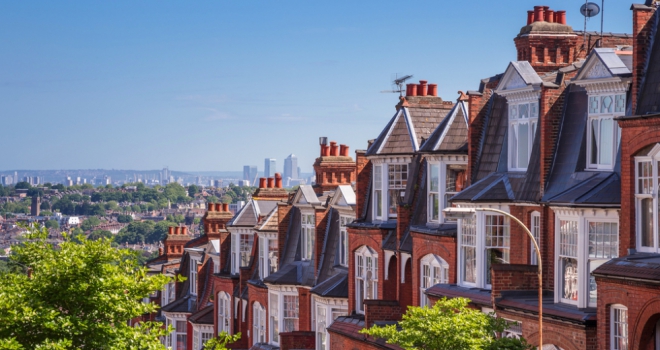
"The cloud on the horizon is inflation which remains stubbornly high. Indeed stagflation is probably the greatest risk facing the UK economy. More interest rate rises are likely and this impacts affordability through higher mortgage rates"
The latest figures from e.suve have revealed that the price of a typical home in England and Wales during May stood at £373,066, down 0.2% on April and up 2% annually or £7,360. This is the lowest rate of annual increase since June 2020 and is the ninth month in succession in which the annual rate of price inflation has fallen.
When looking at the monthly figures, average prices fell in May 2023 by £800, or -0.2%. In the transactions calendar, May tends to indicate the start of the summer season when sales reach their maximum, with buyers as well as sellers active in the market. Both annual and monthly rates show evidence of continuing reductions in price growth, despite seasonal adjustments.
In terms of actual nominal prices, the fall in price since its peak in October 2022 of £6,260 is still relatively minor, especially when compared to the cumulative nearly £41,360 rise in prices since August 2021. In fact, prices have risen by around £58,000, or 18%, since the start of the pandemic in March 2020 – so some perspective is required when commenting on the extent of the current price falls.
The housing market in May 2023
Once again events have confounded the market. Expectations that interest rates had come close to peak were dashed when the Bank of England raised its rate by 0.25% to 4.5% on May 11th and signalled that further rate rises were likely. The market has now priced in a rise to 5.5%, and a consequence of this has been the rising cost of the swap rates used to price fixed-rate mortgages.
Lenders have been withdrawing products and repricing those that remain – partly to avoid being swamped by demand from those borrowers seeking to fix their rates before any further BoE rises (the Bank’s MPC is next due to meet on 22nd June).
This market turbulence has inevitable consequences. Not only are some borrowers finding it harder to obtain a mortgage, but many more are facing rapidly rising mortgage costs, not least as much cheaper fixed-rate deals agreed upon before or during the Covid pandemic - when rates were considerably lower - come to an end.
Little wonder then that house price inflation has continued to reduce. There is inevitable caution by buyers, given the continued drift in prices and the possible rate pressures. Sellers too have reduced their ambitions, partly because they recognise the gains made over previous years. There is a market expectation that prices will continue to slide, albeit to a more modest degree than some commentators had suggested at the turn of the year.
e.suv data suggests that the rate of decline may be slowing and that if the economy continues to avoid recession and price inflation falls away, there then may be grounds for a little more optimism. Certainly, the GfK consumer confidence index in May shows a continuing positive trend.
Mortgage approvals in April were down on March, which corresponds with the broad trends discussed above. Similarly, mortgage arrears have risen slightly - as reported by UK Finance - seemingly as a consequence of the cost of living pressures (and the rise is on the back of historic lows). Without a doubt, there is considerable consumer pain in the housing market, but to date most households seem to be weathering the storm. Much will depend on the future course of interest rates, as well as trends in the wider economy.
Richard Sexton, Director at e.surv, comments: “Of note this month is that the average house price fell by £814, or -0.2%, in May 2023. It is the fifth month in succession in which the average price paid for a home has fallen, making the total reduction in 2023 some £6,000. The trend is more material at the moment than the decrease itself as prices in 2022 on average gained £23,250 - almost 50% of the total average gain since 2020 of £58,000.
"For now this should be of some comfort to those worrying about negative equity. We are not building enough homes and while we have strong employment we would expect prices to be resilient.
"The cloud on the horizon is inflation which remains stubbornly high. Indeed stagflation is probably the greatest risk facing the UK economy. More interest rate rises are likely and this impacts affordability through higher mortgage rates.
“To see the impact of inflation to date, we need only look at the average interest rate on a two-year fixed rate mortgage which now stands at over 5.5% based on 75% Loan to Value. The mortgage market is pricing in a rise in the Base Rate in June which will further hamper many trying to move in what is traditionally a very busy time of the year for the housing market. Looking further forward, the market is now expecting the Bank of England base rate to peak at just over 5% by the end of 2023.
“Affordability, together with a lack of supply of the right kind of property, is now the key force shaping the housing market. Our prognosis is that house price inflation will continue to reduce albeit modestly without fiscal intervention and we expect buyers to be cautious and sellers become less ambitious.”





